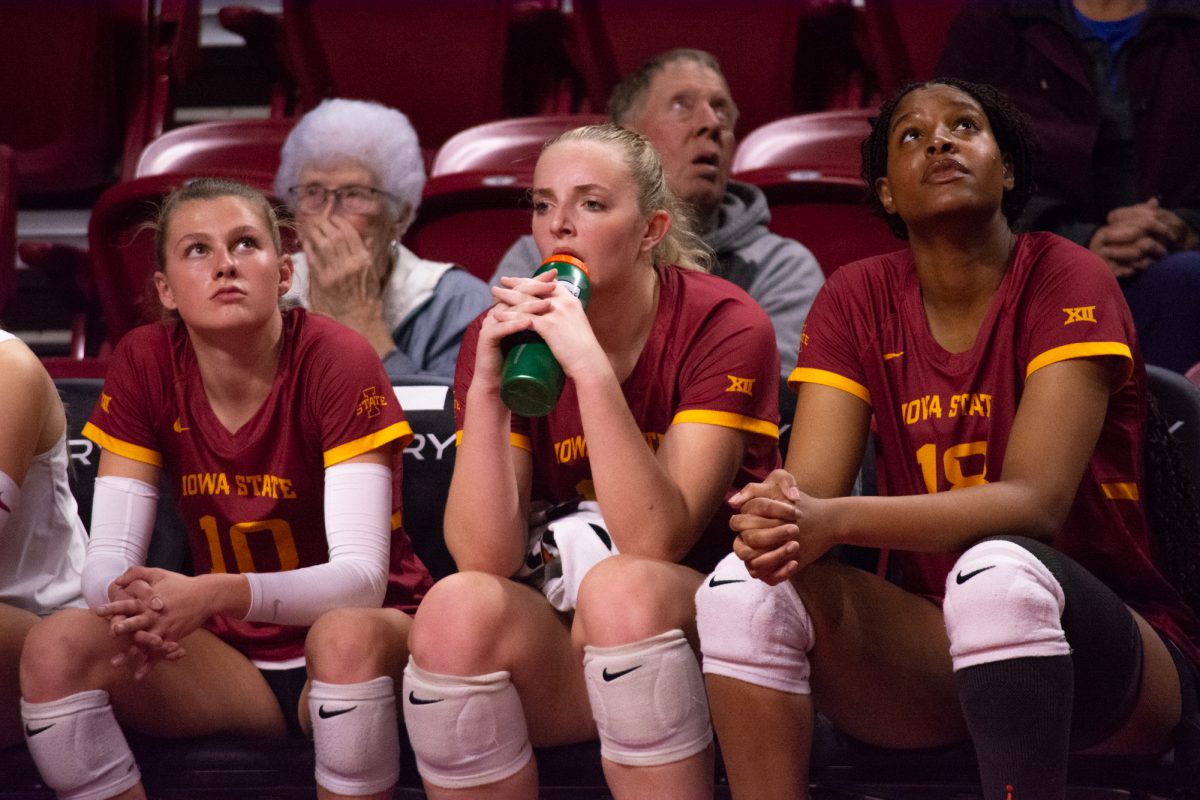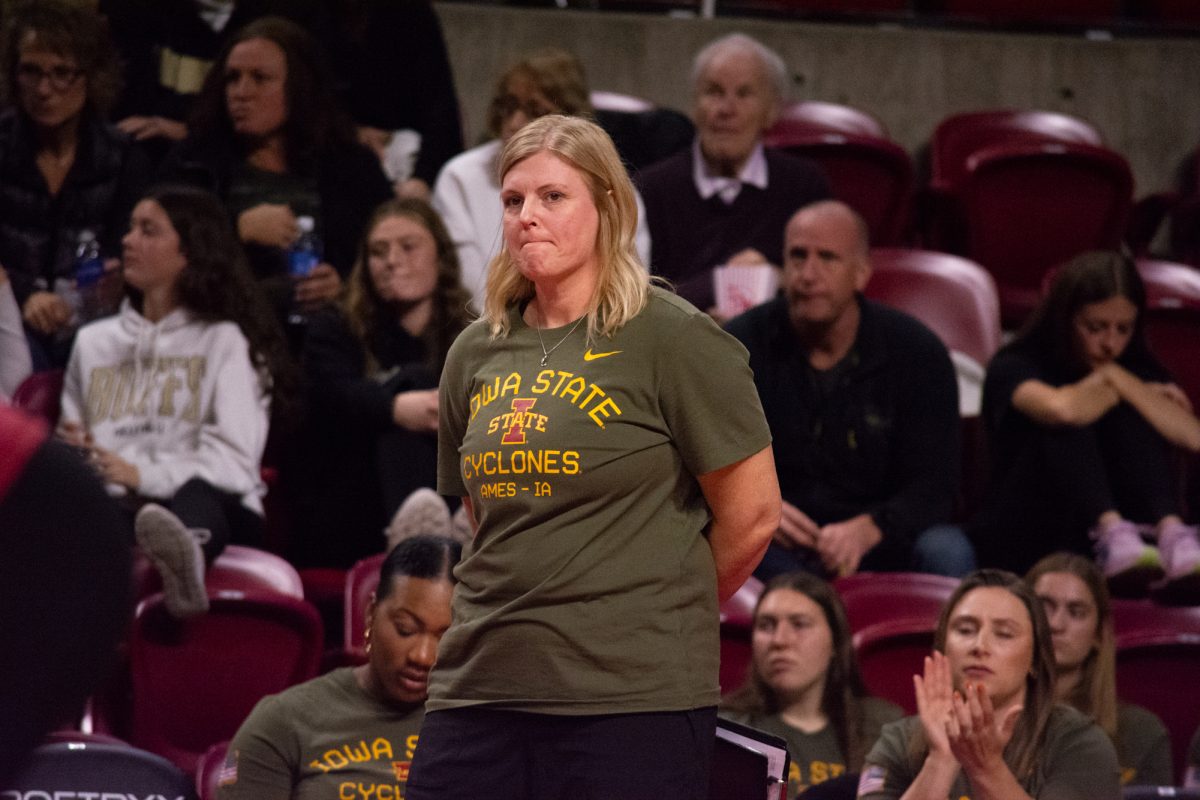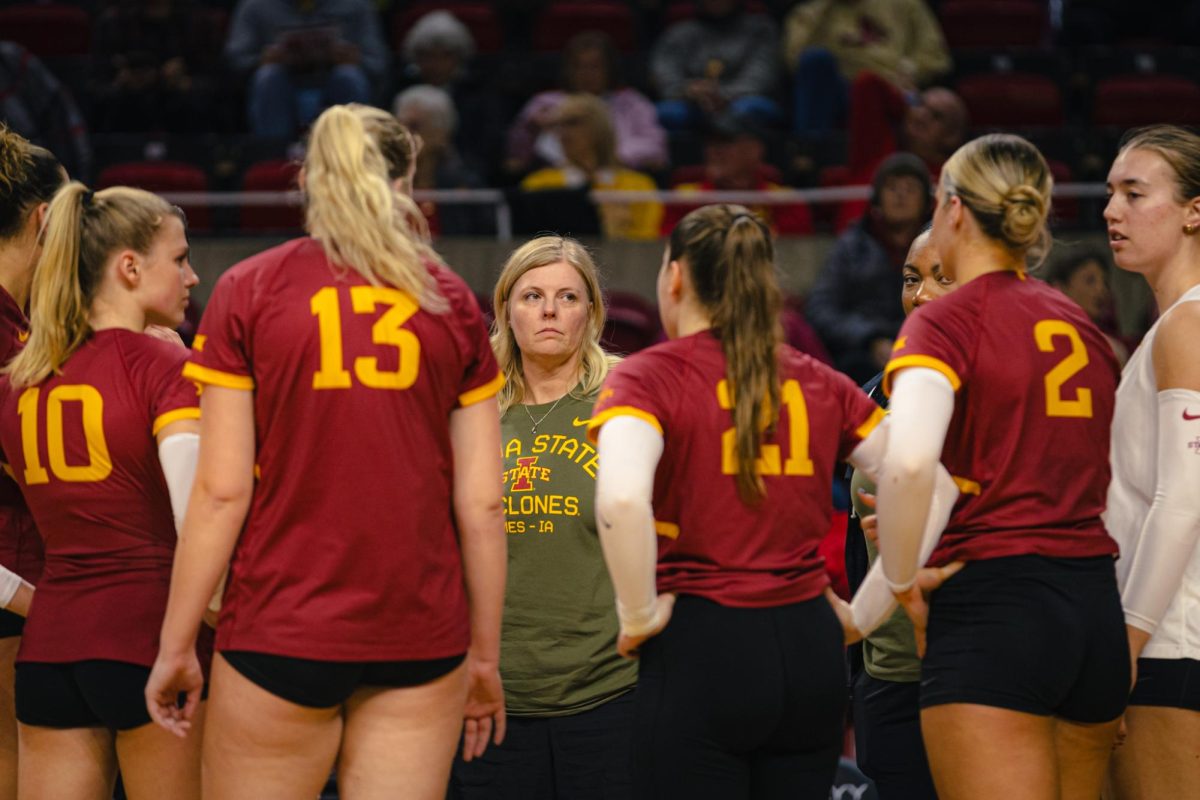Chemotherapy: An option for aging pets
April 2, 1999
Dr. Joanne Graham arrived at her office at 7:30 a.m. and checked on one of her familiar patients, Kayla, a 9-year-old standard schnauzer with stomach cancer.
Graham, an oncologist, performs chemotherapy treatments on Kayla and the majority of cancer cases that are referred to Iowa State’s College of Veterinary Medicine.
An increasing number of owners are taking their pets to Graham and her associates for treatment. The number of Iowa State’s chemotherapy patients increased last year from 200 to 500.
The bad news
Graham has been helping Kayla since her malignant stomach tumor, gastric adenocarcinoma, was diagnosed postoperatively in October.
Kayla originally visited a local veterinarian in September because her owner, Judy Brayton, became concerned about Kayla’s chronic vomiting. Brayton then was referred to the university’s clinic by Kayla’s original veterinarian. Blood tests and urine samples were collected, examined and scrutinized.
In October, Brayton had prepared herself for a negative diagnosis after doctors could not immediately explain Kayla’s vomiting.
“I kinda prepared myself for [the diagnosis] because she wasn’t responding to any treatment we’d tried,” Brayton said. But Brayton said she still was “shocked” and “very worried” by the news.
Like most cancer patients, Kayla received a full examination by Graham. Kayla underwent X-rays, an ultrasound and blood-work before she was diagnosed. Graham’s suspicions of cancer were confirmed after half of Kayla’s stomach was removed and sent to pathology for analysis. The test for cancer returned positive.
Time for treatment
Kayla began double chemotherapy treatments in October. She was examined by Graham and the hospital’s staff again in December. After more X-rays and another ultrasound, there was no evidence of the tumor’s return.
Now Kayla waits patiently in her kennel, comfortable with the routine. She will receive her dose of 5-Fluorouracil via a butterfly catheter injection. This bow-tie-shaped plastic allows a quicker, easier way to deliver medicine than an ordinary needle with a syringe.
However, a risk still exists. An ordinary catheter increases the risk of lacerating the vein as the potentially toxic chemicals are injected.
If Kayla’s blood tests show her white blood cells are at acceptable levels for treatment, she will receive the day’s chemotherapy injection, Graham said.
Graham leaves Kayla to see if her next patient, Rosie, has arrived. Rosie is a Corgi in remission from lymphoma. Since Rosie and her owner had not checked in yet, Graham continues with her duties.
“Sometimes, it’s so sad”
Time for consultations. A 16-year-old poodle shakes in her kennel as Graham approaches. Almost blinded by the swollen lumps around her eyes, the obviously uncomfortable dog is lifted gently out of her cage and onto the examination table.
Graham confirms a previous doctor’s diagnosis. She said the poodle’s case was an example of “advanced cutaneous lymphoma,” or skin cancer.
Lymphoma cannot be confirmed until a biopsy is done, Graham said.
The poodle’s disease is so advanced, Graham decides to diagnose it immediately. While wincing in sympathy for the uncomfortable animal, Graham snaps photographs to document the dog’s condition, paying close attention to the lesions on the tongue.
Although this poodle is an older dog, Graham recommends treatment for the dog’s condition.
Graham said she does not let age deter her from making a recommendation for treatment if the animal is otherwise healthy.
“Age is not a disease,” Graham said.
As Graham calculates the dosage for the poodle’s chemotherapy treatment, the dog’s student-veterinarian comes back with bad news. The owners do not wish to treat the dog.
“Sometimes, it’s so sad,” Graham said. “We try not to pass judgment. We don’t know [the owners’] reasons on why they do and don’t treat.
“It could be they’ve had bad experiences with chemotherapy,” she said.
A new patient
It is time to move back to Kayla. Her blood-work is back, and her white blood cells are high enough for her to receive another round of chemotherapy.
After checking the blood-work, Graham notices Rosie and her owner have arrived.
Graham ushers them both into an exam room. Rosie, who cheerfully greets Graham, is quite familiar with the procedure.
First, Graham examines Rosie and questions her owner about her behavior at home. She asks questions about Rosie’s eating habits, daily temperature, regularity and any possible vomiting.
Graham then takes Rosie’s temperature and weighs her. Now it is time for the hard part — getting a blood sample from Rosie’s neck. A veterinary technician helps Graham draw Rosie’s blood. The blood sample is sent to the laboratory to analyze the level of white blood cells.
Rosie is taken to an empty kennel and starts barking when Graham leaves her sight.
Rosie will not have to wait long. Her blood count is fine, and she can receive her chemotherapy treatment — now in the maintenance stage —for her lymphoma. Unlike Kayla’s cancer therapy, which will be ending soon, Graham said Rosie has to remain on maintenance treatment for the rest of her life to keep her lymphoma in remission.
With blood samples collected and cleared for both dogs, it is time for Graham to request the chemotherapy treatments prepared by the school’s pharmacist, Steve Martin.
Chemotherapy
All the drugs used on veterinary patients actually are chemotherapy treatments designed for humans, Graham said.
Graham said the average cost of chemotherapy treatments at ISU’s veterinary college for lymphoma cases, the most frequently treated cancer, ranges from $500 to $700. Yet, a larger dog with bone disease could cost its owner about $2,500. These costs include most office visits, blood work and drugs.
The most expensive part of cancer treatments is exploratory surgery, if it is needed. Surgical costs can range from $800 to $1,000, and this includes all pre- and post-operative work, Graham said.
Brayton said the most expensive part of Kayla’s treatment was the exploratory surgery needed to remove part of the dog’s stomach.
Martin said he is extremely cautious when he prepares the drugs used for chemotherapy treatments, often double-checking his calculations. He also performs all of his tasks under the cover of a protective gown and gloves, thus limiting his exposure to the chemicals.
After Martin disposes of his gown and gloves into a biohazard container, the completed prescriptions are each placed in a marked chemotherapy bag.
Maintenance
Graham picks up her order and prepares to medicate Rosie. The Corgi’s maintenance is simple enough: her Lomustine tablets are packed into a ball of food. Graham gives Rosie three food balls. The first is to whet Rosie’s appetite. The second is the treatment, and the third is a “chaser.”
Since Rosie is very willing to accept the food, she is free to go home.
Kayla’s treatment is not as easy.
She receives her treatment by injection. So she first has to be escorted to the chemotherapy treatment room.
Graham shaves a small patch of hair off of Kayla’s leg so the catheter can be inserted.
Next, Kayla receives her medication through the butterfly catheter. This helps Graham and the technician slowly administer the dose over a five-minute interval.
“It’s worth it”
Graham said that the majority of dogs — 80 percent — do not have any side effects of the chemotherapy drugs. She said only 10 percent have severe vomiting and diarrhea.
However, Kayla did lose some hair, Brayton said, but it was not drastic like humans on chemotherapy.
Brayton said she believes starting Kayla on chemotherapy was the right decision because her quality of life has improved.
“It’s been an unexpected expense, but as far as I’m concerned, it’s worth it,” Brayton said.
“The pet is viewed as part of the family,” Graham said. “It’s hard to put a monetary value on part of the family.”






